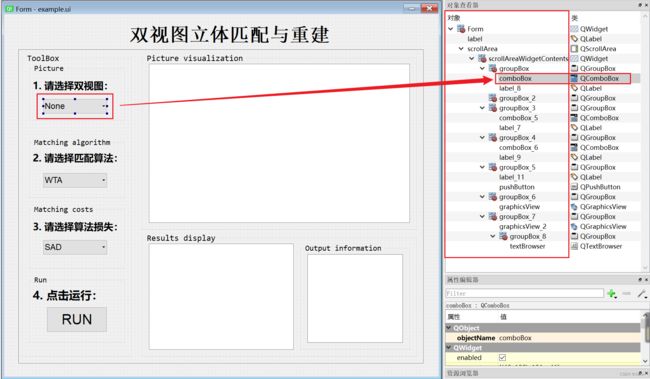- OpenHarmony开发自测试执行框架_openharmony tdd testsize
2401_89317507
tdd
staticvoidSetUpTestCase(void);staticvoidTearDownTestCase(void);voidSetUp();voidTearDown();};voidCalculatorSubTest::SetUpTestCase(void){//inputtestsuitsetupstep,setupinvokedbeforealltestcases}voidCalcu
- 从零开始构建一个简单的Python Web爬虫实战指南与技巧
一键难忘
python前端爬虫PythonWeb
从零开始构建一个简单的PythonWeb爬虫实战指南与技巧随着数据科学和大数据分析的快速发展,网络爬虫(WebScraping)成为了获取互联网数据的重要工具。通过爬虫,我们可以自动化地从网页上获取各种信息,如新闻、产品价格、社交媒体内容等。本文将带您从零开始,使用Python构建一个简单的Web爬虫,抓取网页内容并保存数据。Web爬虫的基本概念什么是Web爬虫?Web爬虫(也称为网络蜘蛛或抓取器
- Python面试宝典13 | Python 变量作用域,从入门到精通
多森AI
Python面试题python面试开发语言
今天,我们来深入探讨一下Python中一个非常重要的概念——变量作用域。理解变量作用域对于编写清晰、可维护、无bug的代码至关重要。什么是变量作用域?简单来说,变量作用域就是指一个变量在程序中可以被访问的范围。Python中有四种作用域:局部作用域(Local):在函数或代码块内部定义的变量,只能在该函数或代码块内部访问。局部变量的作用域范围最小,只能在定义它们的函数或代码块内部使用。defmy_
- 详解python的单例模式
hunter206206
pythonpython
单例模式是一种设计模式,它确保一个类只有一个实例,并提供一个全局访问点来获取这个实例。在Python中实现单例模式有多种方法,下面我将详细介绍几种常见的实现方式。1.使用模块Python的模块天然就是单例的,因为模块在第一次导入时会被加载到内存中,之后的导入都是直接使用内存中的模块对象。因此,你可以通过模块来实现单例模式。#singleton.pyclassSingletonClass:def__
- Python数据的筛选、排序与聚合
大数据张老师
Python程序设计python开发语言Python数据处理
Python数据的筛选、排序与聚合在数据分析过程中,我们常常需要对数据进行筛选、排序和聚合操作,以便从数据集中提取有价值的信息。这些操作是数据预处理和分析的基础,尤其在处理大型数据集时,能够帮助我们快速定位关键数据,进行进一步的分析。Pandas提供了强大的工具来支持这些操作,主要通过对Series和DataFrame的相关方法进行操作来实现。本节将详细讲解如何使用Pandas的Series和Da
- Python默认值参数
橙橙的橙橙子
python
示例1:可变对象作为默认值参数defdemo(newitem,old_list=[]):old_list.append(newitem)returnold_listprint(demo('5',[1,2,3,4]))print(demo('aaa',['a','b']))print(demo('a'))print(demo('b'))[1,2,3,4,'5']['a','b','aaa']['a'
- python 函数 默认参数
夏华东的博客
python开发语言后端
python函数默认参数defadd(a=1,b=2):#a,b设置默认参数c=a+breturncc=add(a=2)#如果不填,就是默认参数print(c)4
- 弄懂这56个Python使用技巧,秒变Python大神!
追梦IT男
PythonPython基础数据挖掘爬虫编程语言
1.枚举-enumerate可以有参数哦之前我们这样操作:i=0foriteminiterable:printi,itemi+=1现在我们这样操作:fori,iteminenumerate(iterable):printi,itemenumerate函数还可以接收第二个参数。就像下面这样:>>>list(enumerate('abc'))[(0,'a'),(1,'b'),(2,'c')]>>>li
- Python机器学习实战:人脸识别技术的实现和挑战
AI天才研究院
AI大模型企业级应用开发实战大数据AI人工智能计算科学神经计算深度学习神经网络大数据人工智能大型语言模型AIAGILLMJavaPython架构设计AgentRPA
Python机器学习实战:人脸识别技术的实现和挑战作者:禅与计算机程序设计艺术/ZenandtheArtofComputerProgramming关键词:人脸识别技术,模型训练,多人识别,动态人脸检测,应用场景1.背景介绍1.1问题的由来随着科技的进步和互联网的普及,人脸识别技术因其在安全验证、生物特征识别、智能监控等多个领域的广泛应用而迅速崛起。从传统的门禁系统到现代的人脸支付、社交媒体的自动登
- python GUI 编程
AICVer
Pythonpython开发语言
界面程序"""测试一个经典的GUI程序的写法,使用面向对象的方式"""importtimefromtkinterimport*fromtkinterimportmessageboxfromtkinterimportfiledialogimportthreadingfromcut_brickimportcal_brickclassApplication(Frame):"""一个经典的GUI程序的类的
- Python中的函数默认参数
NoABug
pythonjava前端Python
在Python中,函数是一种重要的编程结构,它允许我们封装一段可重复使用的代码,并通过参数来接收不同的输入。在定义函数时,我们可以为参数提供默认值,这些默认值在调用函数时可以被省略。本文将详细介绍Python中的默认参数,并提供相应的源代码示例。函数的默认参数是指在定义函数时为参数提供的预设值。当函数被调用时,如果没有为该参数提供实际值,将使用默认值来代替。这对于那些在大多数情况下都使用相同值的参
- Python函数参数 - 默认参数:在Python中,可以给函数参数指定默认值,从而使其成为可选参数
伯乐 IAN
pythonjava前端
Python函数参数-默认参数在Python中,函数是一种非常重要的概念,它们可以让你封装可重复使用的代码块。函数参数是函数定义中的变量,用于接收调用函数时传递的值。Python提供了灵活的方式来定义函数参数,其中之一就是默认参数。默认参数的概念默认参数是指在定义函数时为参数指定了一个默认值。这意味着在函数调用时,如果不提供该参数的值,则会使用默认值。默认参数可以使函数更加灵活,允许用户在需要时传
- blender 相机参数
AI算法网奇
3d渲染数码相机blender
目录设置相机参数:3.设置相机参数示例4.相机透视与正交5.额外的高级设置设置相机参数:设置渲染器:设置相机参数:3.设置相机参数示例假设你有一个相机,并希望设置它的焦距和位置,可以通过Python脚本来设置这些参数:pythonimportbpy#获取当前场景中的相机camera=bpy.context.scene.camera#设置相机的位置(外参)camera.location=(0,0,1
- 探索神经网络的奥秘:从基础理论到Python实践
仲毓俏Alanna
探索神经网络的奥秘:从基础理论到Python实践【下载地址】第一章神经网络如何工作附Python神经网络编程.pdf分享本资源文件提供了关于神经网络基础知识的详细介绍,并附带了一个Python神经网络编程的PDF文件。通过学习本资源,您将能够理解神经网络的基本工作原理,并掌握如何使用Python进行神经网络编程项目地址:https://gitcode.com/Resource-Bundle-Col
- 探索高效图像识别:基于OpenCV的形状匹配利器
崔庭盼Melvina
探索高效图像识别:基于OpenCV的形状匹配利器【下载地址】形状匹配find_scaled_shape_model资源文件本资源文件提供了使用OpenCV实现Halcon中算子`find_scaled_shape_model`的功能。该功能主要用于在图像中查找与模板形状相似的目标,并支持缩放变换。具体实现细节和使用方法可以参考相关博客文章项目地址:https://gitcode.com/open-
- python学习(11)--python 函数默认参数
程序员陈师傅
Python学习专栏python学习开发语言
在Python中,函数默认参数是指在函数定义中为参数指定默认值的参数。当调用函数时,如果没有为默认参数提供值,那么将使用默认值。函数默认参数的语法如下:deffunction_name(parameter1=default_value1,parameter2=default_value2,...):#函数体下面是一个使用默认参数的函数示例:defgreet(name,message="Hello"
- TCP 真的存在“粘包”问题吗?
计算机网络后端tcp
引言许多开发者都曾面对过这样一个的问题:明明分别调用两次send()发送了"Hello"和"World",接收方却可能在一个recv()调用中读到完整的"HelloWorld";或是发送了一个完整的JSON对象,接收端却需要多次读取才能拼凑出完整数据。这种现象被中文技术社区广泛称为“TCP粘包”然而,若我们深入TCP协议的设计本质,会发现一个令人困惑的矛盾——RFC文档中从未定义过“粘包”概念,国
- MySQL与Python:连接与操作数据库的魔法之旅
墨瑾轩
一起学学数据库【一】数据库mysql
关注墨瑾轩,带你探索编程的奥秘!超萌技术攻略,轻松晋级编程高手技术宝库已备好,就等你来挖掘订阅墨瑾轩,智趣学习不孤单即刻启航,编程之旅更有趣开篇:数据库世界的探险️嘿,亲爱的Python小巫师们!今天我们要一起踏上一段探险之旅——连接并操作MySQL数据库。在这个数据的海洋中,MySQL是我们的宝藏库,而Python则是我们的魔法棒。准备好你的魔法帽,我们即将开始这段连接与操作数据库的魔法之旅!M
- 【 书生·浦语大模型实战营】学习笔记(三):“茴香豆” 搭建你的RAG 智能助理
GoAI
自然语言处理NLP深入浅出AI深入浅出LLM深度学习LLM人工智能大模型
AI学习星球推荐:GoAI的学习社区知识星球是一个致力于提供《机器学习|深度学习|CV|NLP|大模型|多模态|AIGC》各个最新AI方向综述、论文等成体系的学习资料,配有全面而有深度的专栏内容,包括不限于前沿论文解读、资料共享、行业最新动态以、实践教程、求职相关(简历撰写技巧、面经资料与心得)多方面综合学习平台,强烈推荐AI小白及AI爱好者学习,性价比非常高!加入星球➡️点击链接【书生·
- Python 如何安装 distutils模块??
bug菌¹
全栈Bug调优(实战版)#CSDN问答解惑(全栈版)python数据库开发语言
本文收录于《全栈Bug调优(实战版)》专栏,主要记录项目实战过程中所遇到的Bug或因后果及提供真实有效的解决方案,希望能够助你一臂之力,帮你早日登顶实现财富自由;同时,欢迎大家关注&&收藏&&订阅!持续更新中,up!up!up!!问题描述电脑安装了Python3.12,但是里面没有distutils模块,如何安装该模块解决方案 如下是上述问题的解决方案,仅供参考:在Python3.12中,dis
- 动态调频调压小记
yuanbinquan
Linux系统linuxcpu调频调压
最近遇到一个发热严重问题,顺带学习了linux的动态调频调压。相关的具体技术我这里就不详细讲解了,顾名思义系统能够根据自身状态调整cpu工作电压和工作频率,从而达到降低功耗的目的。查看cpu工作频率:cat/sys/devices/system/cpu/cpu0/cpufreq/cpuinfo_cur_freq查看cpu工作电压:cat/sys/devices/system/voltage/cor
- Docker Ubuntu 20.04执行CI任务交叉编译riscv64-linux-gcc时no such file or directory
Wentao Wu
第一次接触rsicv64的交叉编译环境(其他交叉编译环境也基本没接触过,只是知道概念和原理),目前的需求是需要在gitlab上给一套rsicv64-linux-gcc执行CI任务,默认直接在本地服务器执行交叉编译,需要经常清理服务器文件,且成熟的开发环境不适合作为测试环境来运行,因此考虑将CI任务直接在Docker中执行,也需要配置最小化且测试环境最干净的Docker镜像。手工在服务器执行,全套流
- 零基础学Python学习笔记
小陌白
机器学习python学习开发语言
Python学习笔记代码下载地址链接:https://pan.baidu.com/s/1yGnpfq4ZHeKpt4V0J_PTSg提取码:hmzs1.Python基础语法1.1基本数据类型整数(int):8浮点数(float):8.8字符串(str):“8”“Python”布尔值(bool):TrueFalseprint(type(int('8')))#将字符串8转化为整型print(type(
- cpu 调频策略
weixin_33814685
python
2019独角兽企业重金招聘Python工程师标准>>>调频策略通常有如下:1.Performance:CPUfreq被设置成scaling_min_freq和scaling_max_freq中的最高频率,2.Powersave::CPUfreq被设置成scaling_min_freq和scaling_max_freq中的最低频率;3.Userspace:允许root权限的用户通过sysfs的“sc
- 202、【数组】leetcode ——2588. 统计美丽子数组数目(C++/Python版本)
辰阳星宇
数据结构与算法刷题#数组#哈希表leetcodec++算法
题目描述原题链接:2588.统计美丽子数组数目解题思路本题的难点在于对于题意的解析与思路的转化。题中说的子数组中的美丽数,每次找两个数,其相同位减去1。相当于是这个数组中,每一个位的二进制数为1的个数偶数即可。进一步,可通过在这个子数组中所有的数进行异或运算后得到的结果是否为0来验证是否为每位为1的个数是否为偶数。(异或运算:对相同为0,相异为1,0与任何数计算该数数值保持不变)因此,问题就转化为
- cpu 动态调频之(频率范围,频率设置)
raoxu_1154492168
linux
一、应用态参数介绍/sys/devices/system/cpu/cpu0/cpufreq/affected_cpus//当前策略作用于哪些onlinecorecpuinfo_cur_freq//当前CPU硬件频率cpuinfo_max_freq//CPU硬件支持的最低频率cpuinfo_min_freq//CPU硬件支持的最高频率cpuinfo_transition_latency//硬件支持的
- Python——常见排序算法解析
代码输入中...
算法排序算法数据结构python开发语言
概述十种常见排序算法可以分为两大类:非线性时间比较类排序:通过比较来决定元素间的相对次序,由于其时间复杂度不能突破O(nlogn),因此称为非线性时间比较类排序。线性时间非比较类排序:不通过比较来决定元素间的相对次序,它可以突破基于比较排序的时间下界,以线性时间运行,因此称为线性时间非比较类排序。基础定义稳定:如果a原本在b前面,而a=b,排序之后a仍然在b的前面。不稳定:如果a原本在b的前面,而
- python爬虫之JS逆向入门,了解JS逆向的原理及用法(18)
盲敲代码的阿豪
python之爬虫系统教学python爬虫javascriptJS逆向
文章目录1.JS逆向是什么?2、如何分析加密参数并还原其加密方式?2.1分析JS加密的网页2.2编写python代码还原JS加密代码3、案例测试4、操作进阶(通过执行第三方js文件实现逆向)4.1python第三方模块(execjs)4.2调用第三方js文件完成逆向操作4.3总结1.JS逆向是什么?什么是JS加密?我们在分析某些网站的数据接口时,经常会遇到一些密文参数,这些参数实际就是通过Java
- 课程内容摘要生成:基于知识蒸馏与事实增强的深度学习模型实践
二进制独立开发
非纯粹GenAIGenAI与Python深度学习人工智能自然语言处理python语言模型神经网络生成对抗网络
文章目录引言一、核心技术:知识蒸馏与事实三元组融合二、模型架构设计与优化三、Python实现与关键代码解析四、业务价值与效果分析五、挑战与优化方向引言在教育内容数字化进程中,课程内容摘要生成技术能够从海量教学资源中提炼核心知识点,解决人工编写效率低、知识更新滞后的问题。当前主流方法依赖于深度学习模型,但存在事实性偏差、可解释性不足等缺陷。本文提出一种融合知识蒸馏与事实三元组增强的摘要生成框架,结合
- python 数据采集
go5463158465
python爬虫python开发语言
importpandasaspdfromtimeimportsleepimportrequestsimportmatplotlib.pyplotaspltimportmatplotlib.font_managerasfmfromconcurrent.futuresimportThreadPoolExecutor,as_completed#采集部分'''https://ncpscxx.moa.gov
- apache 安装linux windows
墙头上一根草
apacheinuxwindows
linux安装Apache 有两种方式一种是手动安装通过二进制的文件进行安装,另外一种就是通过yum 安装,此中安装方式,需要物理机联网。以下分别介绍两种的安装方式
通过二进制文件安装Apache需要的软件有apr,apr-util,pcre
1,安装 apr 下载地址:htt
- fill_parent、wrap_content和match_parent的区别
Cb123456
match_parentfill_parent
fill_parent、wrap_content和match_parent的区别:
1)fill_parent
设置一个构件的布局为fill_parent将强制性地使构件扩展,以填充布局单元内尽可能多的空间。这跟Windows控件的dockstyle属性大体一致。设置一个顶部布局或控件为fill_parent将强制性让它布满整个屏幕。
2) wrap_conte
- 网页自适应设计
天子之骄
htmlcss响应式设计页面自适应
网页自适应设计
网页对浏览器窗口的自适应支持变得越来越重要了。自适应响应设计更是异常火爆。再加上移动端的崛起,更是如日中天。以前为了适应不同屏幕分布率和浏览器窗口的扩大和缩小,需要设计几套css样式,用js脚本判断窗口大小,选择加载。结构臃肿,加载负担较大。现笔者经过一定时间的学习,有所心得,故分享于此,加强交流,共同进步。同时希望对大家有所
- [sql server] 分组取最大最小常用sql
一炮送你回车库
SQL Server
--分组取最大最小常用sql--测试环境if OBJECT_ID('tb') is not null drop table tb;gocreate table tb( col1 int, col2 int, Fcount int)insert into tbselect 11,20,1 union allselect 11,22,1 union allselect 1
- ImageIO写图片输出到硬盘
3213213333332132
javaimage
package awt;
import java.awt.Color;
import java.awt.Font;
import java.awt.Graphics;
import java.awt.image.BufferedImage;
import java.io.File;
import java.io.IOException;
import javax.imagei
- 自己的String动态数组
宝剑锋梅花香
java动态数组数组
数组还是好说,学过一两门编程语言的就知道,需要注意的是数组声明时需要把大小给它定下来,比如声明一个字符串类型的数组:String str[]=new String[10]; 但是问题就来了,每次都是大小确定的数组,我需要数组大小不固定随时变化怎么办呢? 动态数组就这样应运而生,龙哥给我们讲的是自己用代码写动态数组,并非用的ArrayList 看看字符
- pinyin4j工具类
darkranger
.net
pinyin4j工具类Java工具类 2010-04-24 00:47:00 阅读69 评论0 字号:大中小
引入pinyin4j-2.5.0.jar包:
pinyin4j是一个功能强悍的汉语拼音工具包,主要是从汉语获取各种格式和需求的拼音,功能强悍,下面看看如何使用pinyin4j。
本人以前用AscII编码提取工具,效果不理想,现在用pinyin4j简单实现了一个。功能还不是很完美,
- StarUML学习笔记----基本概念
aijuans
UML建模
介绍StarUML的基本概念,这些都是有效运用StarUML?所需要的。包括对模型、视图、图、项目、单元、方法、框架、模型块及其差异以及UML轮廓。
模型、视与图(Model, View and Diagram)
&
- Activiti最终总结
avords
Activiti id 工作流
1、流程定义ID:ProcessDefinitionId,当定义一个流程就会产生。
2、流程实例ID:ProcessInstanceId,当开始一个具体的流程时就会产生,也就是不同的流程实例ID可能有相同的流程定义ID。
3、TaskId,每一个userTask都会有一个Id这个是存在于流程实例上的。
4、TaskDefinitionKey和(ActivityImpl activityId
- 从省市区多重级联想到的,react和jquery的差别
bee1314
jqueryUIreact
在我们的前端项目里经常会用到级联的select,比如省市区这样。通常这种级联大多是动态的。比如先加载了省,点击省加载市,点击市加载区。然后数据通常ajax返回。如果没有数据则说明到了叶子节点。 针对这种场景,如果我们使用jquery来实现,要考虑很多的问题,数据部分,以及大量的dom操作。比如这个页面上显示了某个区,这时候我切换省,要把市重新初始化数据,然后区域的部分要从页面
- Eclipse快捷键大全
bijian1013
javaeclipse快捷键
Ctrl+1 快速修复(最经典的快捷键,就不用多说了)Ctrl+D: 删除当前行 Ctrl+Alt+↓ 复制当前行到下一行(复制增加)Ctrl+Alt+↑ 复制当前行到上一行(复制增加)Alt+↓ 当前行和下面一行交互位置(特别实用,可以省去先剪切,再粘贴了)Alt+↑ 当前行和上面一行交互位置(同上)Alt+← 前一个编辑的页面Alt+→ 下一个编辑的页面(当然是针对上面那条来说了)Alt+En
- js 笔记 函数
征客丶
JavaScript
一、函数的使用
1.1、定义函数变量
var vName = funcation(params){
}
1.2、函数的调用
函数变量的调用: vName(params);
函数定义时自发调用:(function(params){})(params);
1.3、函数中变量赋值
var a = 'a';
var ff
- 【Scala四】分析Spark源代码总结的Scala语法二
bit1129
scala
1. Some操作
在下面的代码中,使用了Some操作:if (self.partitioner == Some(partitioner)),那么Some(partitioner)表示什么含义?首先partitioner是方法combineByKey传入的变量,
Some的文档说明:
/** Class `Some[A]` represents existin
- java 匿名内部类
BlueSkator
java匿名内部类
组合优先于继承
Java的匿名类,就是提供了一个快捷方便的手段,令继承关系可以方便地变成组合关系
继承只有一个时候才能用,当你要求子类的实例可以替代父类实例的位置时才可以用继承。
在Java中内部类主要分为成员内部类、局部内部类、匿名内部类、静态内部类。
内部类不是很好理解,但说白了其实也就是一个类中还包含着另外一个类如同一个人是由大脑、肢体、器官等身体结果组成,而内部类相
- 盗版win装在MAC有害发热,苹果的东西不值得买,win应该不用
ljy325
游戏applewindowsXPOS
Mac mini 型号: MC270CH-A RMB:5,688
Apple 对windows的产品支持不好,有以下问题:
1.装完了xp,发现机身很热虽然没有运行任何程序!貌似显卡跑游戏发热一样,按照那样的发热量,那部机子损耗很大,使用寿命受到严重的影响!
2.反观安装了Mac os的展示机,发热量很小,运行了1天温度也没有那么高
&nbs
- 读《研磨设计模式》-代码笔记-生成器模式-Builder
bylijinnan
java设计模式
声明: 本文只为方便我个人查阅和理解,详细的分析以及源代码请移步 原作者的博客http://chjavach.iteye.com/
/**
* 生成器模式的意图在于将一个复杂的构建与其表示相分离,使得同样的构建过程可以创建不同的表示(GoF)
* 个人理解:
* 构建一个复杂的对象,对于创建者(Builder)来说,一是要有数据来源(rawData),二是要返回构
- JIRA与SVN插件安装
chenyu19891124
SVNjira
JIRA安装好后提交代码并要显示在JIRA上,这得需要用SVN的插件才能看见开发人员提交的代码。
1.下载svn与jira插件安装包,解压后在安装包(atlassian-jira-subversion-plugin-0.10.1)
2.解压出来的包里下的lib文件夹下的jar拷贝到(C:\Program Files\Atlassian\JIRA 4.3.4\atlassian-jira\WEB
- 常用数学思想方法
comsci
工作
对于搞工程和技术的朋友来讲,在工作中常常遇到一些实际问题,而采用常规的思维方式无法很好的解决这些问题,那么这个时候我们就需要用数学语言和数学工具,而使用数学工具的前提却是用数学思想的方法来描述问题。。下面转帖几种常用的数学思想方法,仅供学习和参考
函数思想
把某一数学问题用函数表示出来,并且利用函数探究这个问题的一般规律。这是最基本、最常用的数学方法
- pl/sql集合类型
daizj
oracle集合typepl/sql
--集合类型
/*
单行单列的数据,使用标量变量
单行多列数据,使用记录
单列多行数据,使用集合(。。。)
*集合:类似于数组也就是。pl/sql集合类型包括索引表(pl/sql table)、嵌套表(Nested Table)、变长数组(VARRAY)等
*/
/*
--集合方法
&n
- [Ofbiz]ofbiz初用
dinguangx
电商ofbiz
从github下载最新的ofbiz(截止2015-7-13),从源码进行ofbiz的试用
1. 加载测试库
ofbiz内置derby,通过下面的命令初始化测试库
./ant load-demo (与load-seed有一些区别)
2. 启动内置tomcat
./ant start
或
./startofbiz.sh
或
java -jar ofbiz.jar
&
- 结构体中最后一个元素是长度为0的数组
dcj3sjt126com
cgcc
在Linux源代码中,有很多的结构体最后都定义了一个元素个数为0个的数组,如/usr/include/linux/if_pppox.h中有这样一个结构体: struct pppoe_tag { __u16 tag_type; __u16 tag_len; &n
- Linux cp 实现强行覆盖
dcj3sjt126com
linux
发现在Fedora 10 /ubutun 里面用cp -fr src dest,即使加了-f也是不能强行覆盖的,这时怎么回事的呢?一两个文件还好说,就输几个yes吧,但是要是n多文件怎么办,那还不输死人呢?下面提供三种解决办法。 方法一
我们输入alias命令,看看系统给cp起了一个什么别名。
[root@localhost ~]# aliasalias cp=’cp -i’a
- Memcached(一)、HelloWorld
frank1234
memcached
一、简介
高性能的架构离不开缓存,分布式缓存中的佼佼者当属memcached,它通过客户端将不同的key hash到不同的memcached服务器中,而获取的时候也到相同的服务器中获取,由于不需要做集群同步,也就省去了集群间同步的开销和延迟,所以它相对于ehcache等缓存来说能更好的支持分布式应用,具有更强的横向伸缩能力。
二、客户端
选择一个memcached客户端,我这里用的是memc
- Search in Rotated Sorted Array II
hcx2013
search
Follow up for "Search in Rotated Sorted Array":What if duplicates are allowed?
Would this affect the run-time complexity? How and why?
Write a function to determine if a given ta
- Spring4新特性——更好的Java泛型操作API
jinnianshilongnian
spring4generic type
Spring4新特性——泛型限定式依赖注入
Spring4新特性——核心容器的其他改进
Spring4新特性——Web开发的增强
Spring4新特性——集成Bean Validation 1.1(JSR-349)到SpringMVC
Spring4新特性——Groovy Bean定义DSL
Spring4新特性——更好的Java泛型操作API
Spring4新
- CentOS安装JDK
liuxingguome
centos
1、行卸载原来的:
[root@localhost opt]# rpm -qa | grep java
tzdata-java-2014g-1.el6.noarch
java-1.7.0-openjdk-1.7.0.65-2.5.1.2.el6_5.x86_64
java-1.6.0-openjdk-1.6.0.0-11.1.13.4.el6.x86_64
[root@localhost
- 二分搜索专题2-在有序二维数组中搜索一个元素
OpenMind
二维数组算法二分搜索
1,设二维数组p的每行每列都按照下标递增的顺序递增。
用数学语言描述如下:p满足
(1),对任意的x1,x2,y,如果x1<x2,则p(x1,y)<p(x2,y);
(2),对任意的x,y1,y2, 如果y1<y2,则p(x,y1)<p(x,y2);
2,问题:
给定满足1的数组p和一个整数k,求是否存在x0,y0使得p(x0,y0)=k?
3,算法分析:
(
- java 随机数 Math与Random
SaraWon
javaMathRandom
今天需要在程序中产生随机数,知道有两种方法可以使用,但是使用Math和Random的区别还不是特别清楚,看到一篇文章是关于的,觉得写的还挺不错的,原文地址是
http://www.oschina.net/question/157182_45274?sort=default&p=1#answers
产生1到10之间的随机数的两种实现方式:
//Math
Math.roun
- oracle创建表空间
tugn
oracle
create temporary tablespace TXSJ_TEMP
tempfile 'E:\Oracle\oradata\TXSJ_TEMP.dbf'
size 32m
autoextend on
next 32m maxsize 2048m
extent m
- 使用Java8实现自己的个性化搜索引擎
yangshangchuan
javasuperword搜索引擎java8全文检索
需要对249本软件著作实现句子级别全文检索,这些著作均为PDF文件,不使用现有的框架如lucene,自己实现的方法如下:
1、从PDF文件中提取文本,这里的重点是如何最大可能地还原文本。提取之后的文本,一个句子一行保存为文本文件。
2、将所有文本文件合并为一个单一的文本文件,这样,每一个句子就有一个唯一行号。
3、对每一行文本进行分词,建立倒排表,倒排表的格式为:词=包含该词的总行数N=行号
![]()
